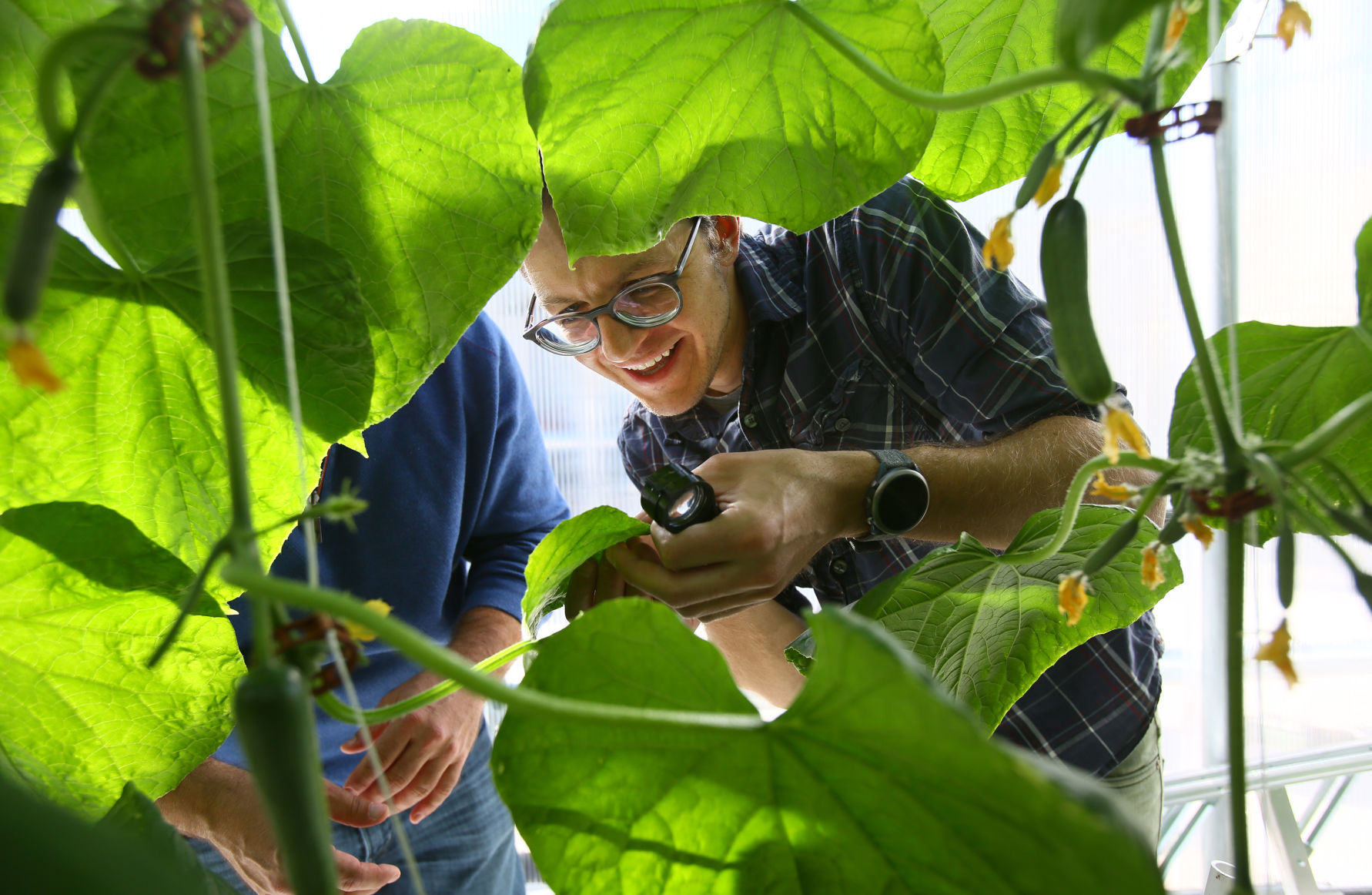- The researchers used CO2 from a Boston University classroom through a rooftop exhaust vent to make spinach four times bigger and corn twice as big as a control group that didn't get CO2.
- High temperatures near an exhaust fan can promote plant growth, especially corn.
- The researchers hope to develop a system that can support rooftop trusses in the future.
Carbon-laden air in busy classrooms at Boston University was recently used as fertilizer for rooftop gardens as part of a scientific study. The researchers reused CO2 from university building exhausts to grow plants in BIG GRO's experimental rooftop gardens and found that in some cases spinach was four times larger than the neighboring control group.
“We wanted to see if there were unused resources in the building that could be used to grow crops on rooftop farms,” Sarabeth Buckley, now at the University of Cambridge and lead author of the study, said in a press release. . “Creating the most favorable growth-friendly environment can help make rooftop growing more successful and therefore a more viable option for installation in buildings.”
🌎 Science explains the world around us. We'll help you sort it all out - join Pop Match Pro!
The study, published in Frontiers in Sustainable Food Systems , shows how the team grew spinach and corn in an area with high CO2 emissions. The same plants were on the roof of the control group fan, but without CO2. The researchers said they chose spinach and corn because both are relatively common and edible plants, but they have different photosynthesis pathways (C3 and C4, respectively).
The biomass of spinach grown on one of the two rooftops was four times that of spinach grown on the control fan. Even when strong winds reduced the size advantage by limiting the amount of CO2 reaching the plant, the spinach was still twice as large as the control group.
“There are still many aspects of this system that need to be determined before it can be implemented, such as the optimal airborne application pattern and the extent of the growth enhancement effect,” Buckley said. “As the wind speed increases, the growth also decreases, so it is necessary to find the optimal wind speed and incorporate it into the system design.”
The study states that the findings "provide initial support for a concept system that creates a more closed carbon process in buildings by capturing high concentrations of CO2 from human breath and transporting it to rooftop farms that can be practically used for food production." “So that people can eat and breathe again.”
 © Getty Images via MediaNews Group/Boston Herald - Getty Images rooftop garden at Boston Medical Center, 2017.
© Getty Images via MediaNews Group/Boston Herald - Getty Images rooftop garden at Boston Medical Center, 2017.Throughout the study, the team monitored CO2 levels in the study area and in 20 rooftop classrooms. “CO2 measurements showed higher concentrations both inside classrooms and in rooftop exhaust vents when people were inside the building,” Buckley said. “CO2 levels are above 1000 ppm, the recommended limit, in classrooms and over 800 ppm, which is enough to encourage plant growth with rooftop exhaust ventilation.”
Not every benefit can be attributed solely to CO2 neutralization. Corn, which, due to its photosynthesis pathway (C4), benefits less from CO2, was also two to three times larger than the control, possibly because the fans were closer to warmer temperatures.
The study calls GROOT GRO a sustainable and scalable system for CO2 fertilizer use in urban environments, noting that targets for "urban vegetation" can help address some of the environmental issues associated with pollution and agriculture.
However, using excess CO2 for fertilization can have disadvantages. Another study from France, recently published in Trends in Plant Science , found that plants with a C3 photosynthesis pathway, such as spinach, are less nutritious when grown in an environment with higher CO2 levels.
Depending on the level of CO2, these plants contain 5 to 25 percent less nutrients such as nitrogen, phosphorus, potassium, iron and others. This discovery has dire consequences. In an era of global warming, farmed food will become less nutritious, affecting both human health and soil health. But French researchers have shown that increasing plant biomass will still be useful to meet modern food needs and reduce atmospheric CO2 levels.
Buckley hopes his initial research will lead to the development and implementation of more rooftop gardening and farming systems.
“If that happens,” Buckley said, “we hope that more money will be saved on rooftops. They can provide many environmental and social benefits such as energy savings for buildings, carbon sequestration, climate change mitigation, urban heat reduction, local food production, community building. , volume and benefits for aesthetic and mental health.


Post a Comment
Post a Comment